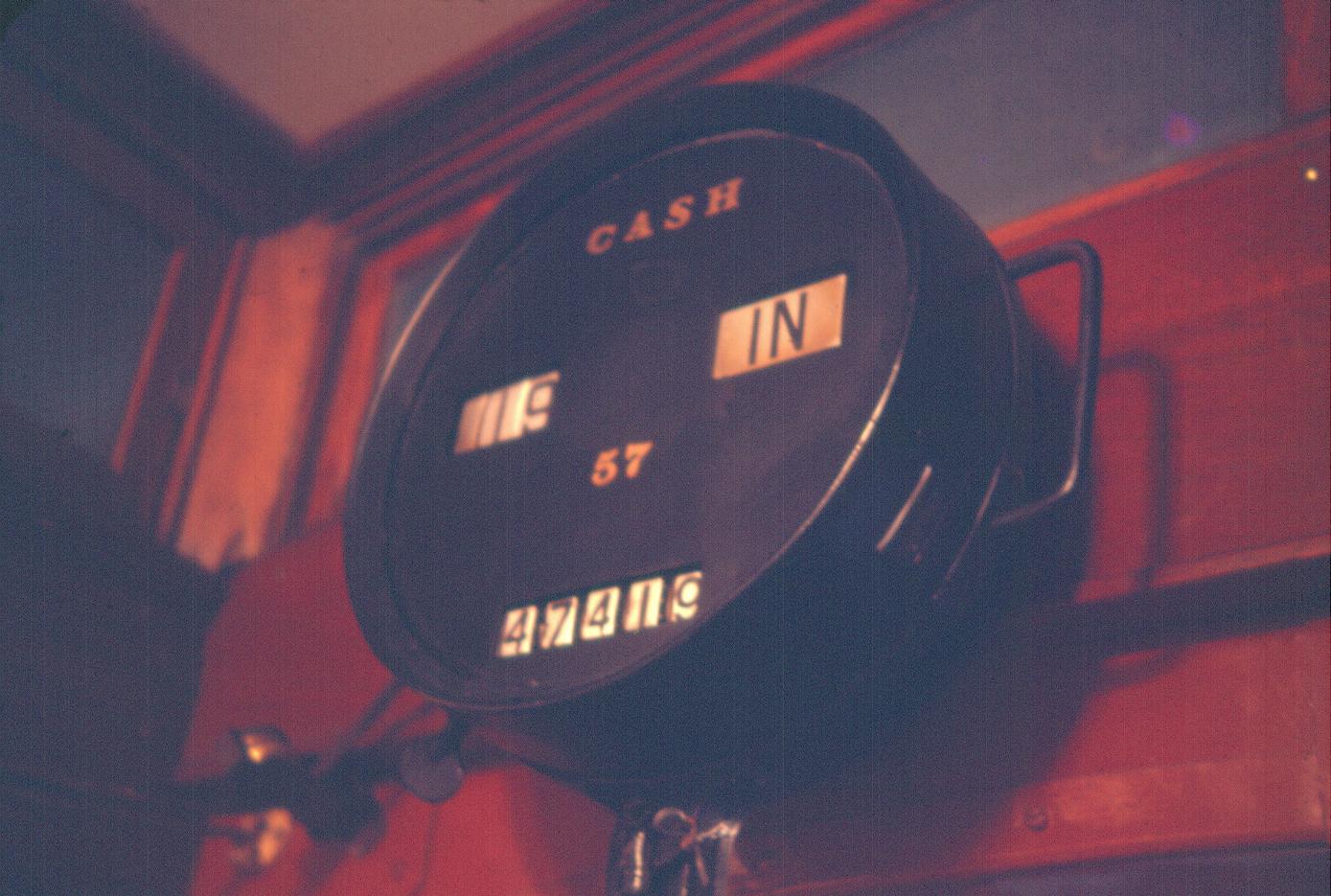
One of the fare registers, the left one, used to count cash fares. This machine was typical of fare registers in the streetcar industry. Each rider handed a fare to the conductor, who gave change if necessary and pulled a cord that rang a bell and advanced the two counters on the register. The bell was supposed to let the rider know that his fare had been counted, and not pocketed by an unscrupulous conductor. The counter at the bottom of the register gave a continuous count that was never reset to zero. The conductor would record the count at the beginning and end of his work day, and was required to turn in the amount of money calculated from that count. At each end of the line, the conductor would record the count at the left and then turn a knob which would reset that counter, thus recording the fares received over a “half trip.” Also, each time the knob was turned, the indicator at the right changed from “IN” to “OUT” or vice versa, meaning inbound or outbound on the route. If it wanted to, the company could analyze riding variations over the day from these data. — Photo by author Hampton
